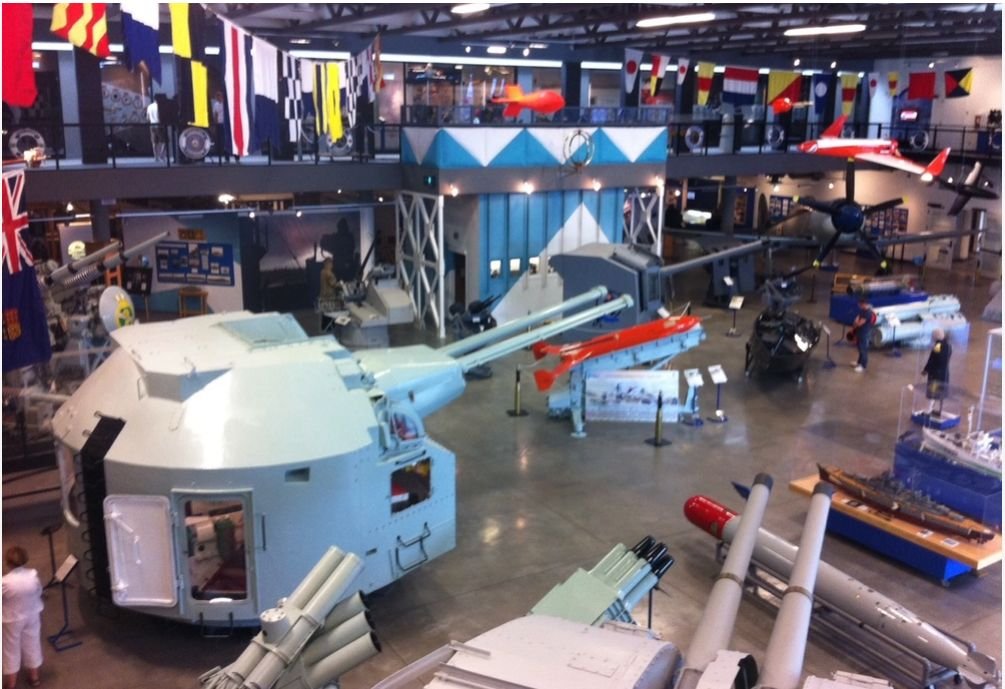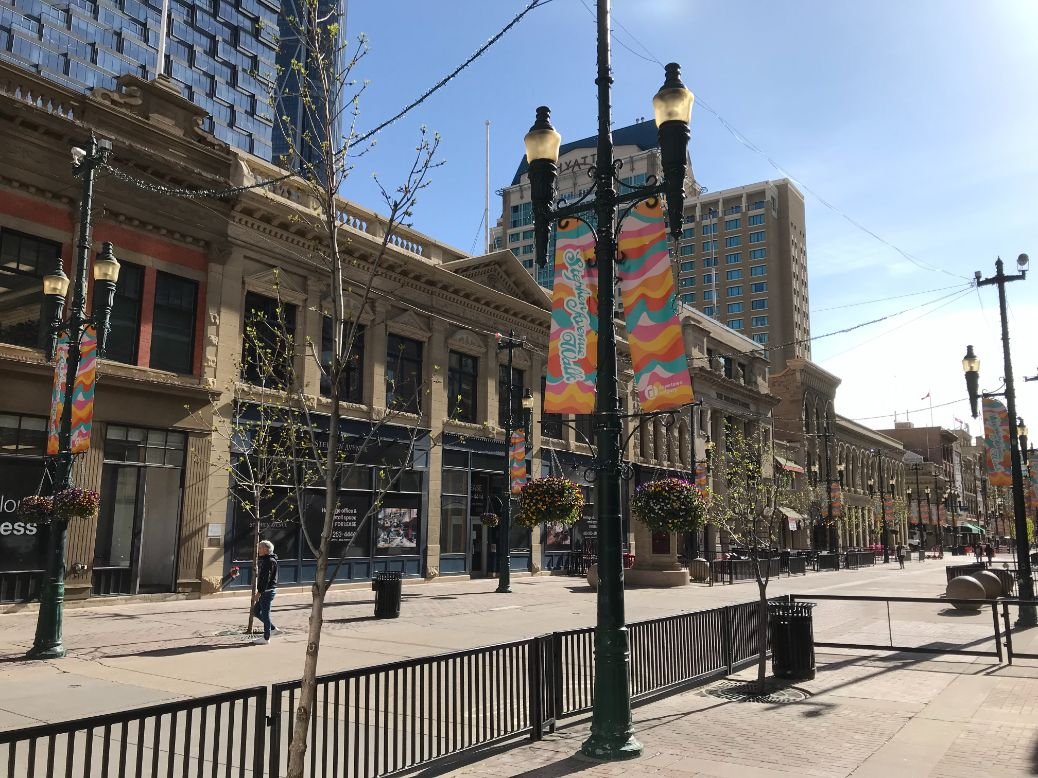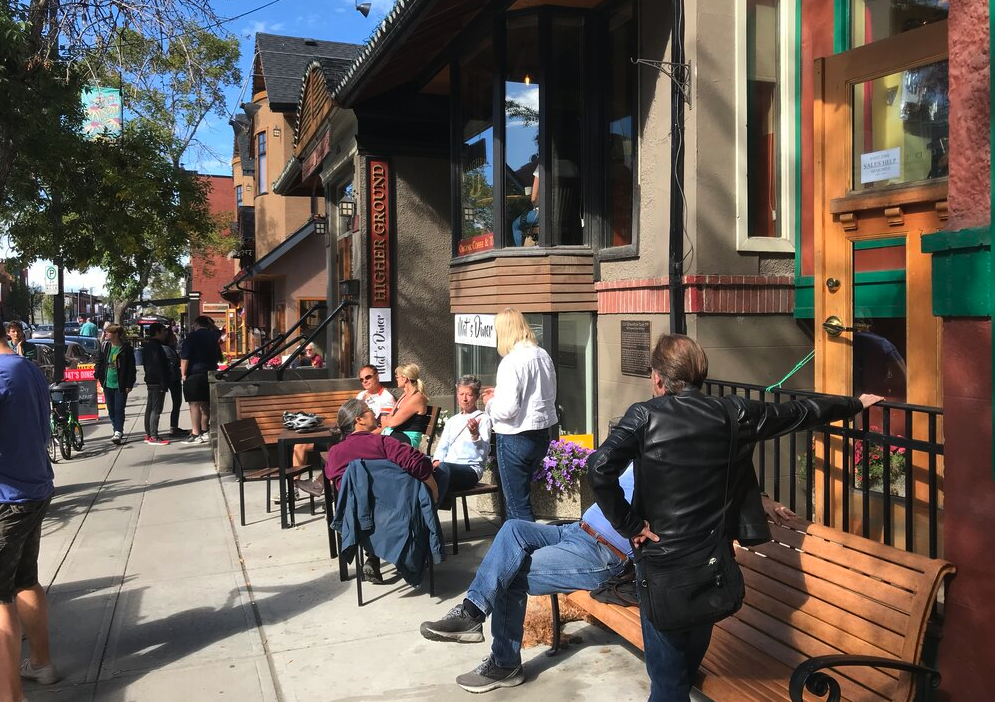An Insider’s Look at Calgary’s History Museums
If you are planning a trip to Calgary and then realize the Glenbow, Calgary’s biggest (one of Canada’s biggest) museums is closed for renovations, don’t worry the city has many other museums waiting for you to. As a long time Calgarian (40+ years) and museum guy, I thought I would put together are insider’s guide to Calgary’s museums. I have not included admission charges or hours as they can change, so best to check the website, or even better call before you go.
I also did not include how to get to the museum either on a rental car in Calgary, taxi or transit as it will depend on where you are staying.
In addition to museums, Calgary is home to numerous historical statues that celebrate the city’s history. The Famous Five monument consists of five polished bronze sculptures located on the south-west corner of downtown’s Olympic Plaza. It celebrates the accomplishments of Emily Murphy, Henrietta Edwards, Irene Parlby, Louise McKinney, and Nellie McClung, collectively known as The Famous Five, in their extensive legal battle in the 1929 ‘Persons’ Case.’
Heritage Park
Located on the shore of the man-made Glenmore Reservoir this 127-acre park offers over 200 exhibits and buildings to explore, making it Canada’s largest living history museum. Fun begins immediately upon arrival as you can take an authentic steam train ride from the parking lot to the park.
All of the buildings have been moved to the Park to create a hypothetical early 20th century small town. In addition, the First Nations Encampment tells the history of tipis, while the area next to it illustrates life on the prairies during the fur trading days.
Admission includes everything from rides at the vintage mid-way to a trip around the reservoir on the S.S. Moyie Paddlewheeler (a half-size replica of the original sternwheeler that used to operate on British Columbia’s Kootenay Lake) or enjoy a horse-drawn carriage or wagon ride. Perhaps you would enjoy dinning in The Selkirk restaurant or chatting over coffee and cake at the Railway Café.
The park is open from the May long weekend to Thanksgiving weekend. And as one Calgarian recently said to me, “it is really impossible to take in all that Heritage Park has to offer in one visit.”
Website: Heritage Park Address: 1900 Heritage Dr. SW
Gasoline Alley Museum at Heritage Park
If you are a car buff this is the place for you. And it is open year-round (it is included in the price of admission when Heritage Park is open). The three storey Gasoline Alley Museum has one of the world’s largest collections of antique vehicles and oil and gas related artifacts including Canada’s largest collection of restored gas pumps and one of the largest collections of restored trucks. This year’s exhibition “Timeless Trucks” looks at the role the pick-up truck has played in our lives. Eight rare and historic pick-ups will be on display, including a seldom seen 1930 Aubourn, the ever-stylish Hudson Terraplane and one of the granddaddies of the truck family - the 1908 REO.
Website: Gasoline Alley Address: 1900 Heritage Dr SW
Fort Calgary
If you are a history buff, you won’t want to miss Fort Calgary where you will discover the story of how Calgary began. Located at the confluence of the Bow and the Elbow River the site is layered with history as this was the summer camping spot of the Mohkinsstsis (Blackfoot), Wîchîspa (Nakoda) Guts’ists’i (Tsuut’ina) nations. But don’t expect to find a fort as that was demolished in 1914 when the Grand Trunk Pacific Railway bought the site for $250,000 and all the buildings were destroyed to make way for a rail terminal.
An interpretive centre was built in 1977 and other buildings were added which includes a replica of the NWMP’s two storey barracks which now hosts exhibits that tell the story of the role of the Northwest Mounted Police in Calgary’s history and their relationship with the indigenous people and early pioneers.
Just across the Elbow River from Fort Calgary is the Deane House, which was built in 1906 as the home for Captain Richard Burton Deane who was the superintendent of the Fort. Today is it an upscale restaurant that is definitely worth a visit - a great place for lunch, brunch or dinner.
Next to the Deane House is the Hunt House the oldest building in Calgary still located on its original site. It was built between 1876 and 1881 for Métis employees of the Hudson's Bay Company located at 8th Street and 9th Avenue SE. The last person to live in the house was William Hunt, a rail worker, who died in the mid 1970s.
Website: Fort Calgary. Address: 750 – 9th Ave SE
National Music Centre /Studio Bell
Calgary’s newest museum is the National Music Centre which is home to 2,000+ musical artifacts, including 200 fully functional historic instruments, spanning 450 years of music. It also includes four Canadian Music Hall of Fames – Canadian Music Hall of Fame, Canadian Country Music Hall of Fame, Canadian Songwriters Hall of Fame and Quebec’s ADISQ Hall of Fame.
These Hall of Fames include musical artifacts, one-of-a-kind memorabilia, and tributes to inductees, these collections pay homage to some of Canada’s most renowned music industry icons—from Bryan Adams and Buffy Sainte-Marie to Oscar Peterson and Neil Young.
One of the highlights of any visit is the live demonstration of the Kimball Theatre Organ, built in 1924 as a theatre organ for silent movies. Many of the exhibits are interactive and child friendly. There are often afternoon live performances and be sure to check into what live performances are happening at the King Eddy one of Canada’s great live music venues which has been incorporated into the museum.
https://amplify.nmc.ca/video/top-10-hits-tour-presented-by-bell-kimball-theatre-organ/
Website: Studio Bell. Address: 850 4th St SE
Military Museums
Most people are surprised to learn Calgary is home to Canada’s second largest military museum. While visiting The Military Museums, you can explore eight distinct museums and galleries, including the Naval, Army and Air Force Museums of Alberta, the four Regimental army museums and The Founders' Gallery.
The Founders’ Gallery is a 4,000 square foot space dedicated to exploring human conflict worldwide through projects by local, international, historic, and contemporary artists that challenge viewers’ knowledge of and interaction with war.
The Mural of Honour was launched in November 2005 as a fundraising project for the new Founders' Gallery at the Military Museums. The process of installing the individual Mural panels in the atrium of The Military Museums began in November 2006 and unveiled on 9 November 2007. The 240 panels represent Canada’s military history from the War of 1812 to Afghanistan, and the collective stories reveal the different theatres of war Canadians have been involved in for nearly 200 years, including both overseas and domestic operations.
Outside the museum there are several pieces of military equipment including a CF-5 Freedom Fighter jet that children love to explore. As well, there is a piece the World Trade Centre that was destroyed in 9/11 as a monument to the Calgary firefighters and others who helped in the aftermath of the tragedy.
Website: Miltary Museums Address 4520 Crowchild Trail SW
Hangar Flight Museum
The Hangar Flight Museum is located in a drill hall that was built as part of the British Commonwealth Air Training Plan during the Second World War. The museum has 20+ planes, gliders and helicopters on display as well as Canada’s Aviation Hall of Fame.
Website: Hangar Flight Museum Address: 4629 McCAll Way NE
Senator Lougheed House
The Senator Lougheed Residence is a large, two and one-half storey building situated on eight and one-half lots in Calgary's Beltline District (just south of downtown). Built in 1891 with alterations and additions in 1907, this Queen Anne Revival home was designed by architect James Bowes. The building features a rough-faced sandstone exterior, asymmetrical massing, complex roofline, and two towers.
In addition to being the home of one of Calgary’s most influential families, the Lougheed house has very interesting rotating exhibitions (current exhibit is “Bread Stories”). It is also home to a lovely restaurant, where you can experience both a modern and vintage dining experience. Outside are the lovely 2.8-acre Beaulieu Gardens. In Victorian times, garden parties were extremely popular, especially amongst the social elites. The Lougheeds entertained many local and visiting dignitaries, including the Prince of Wales in 1919 when he was in Calgary on an official royal visit. The garden is free to all, open from dawn to dusk and are maintained by volunteers.
FYI: “Beaulieu” is French for “beautiful place.”
Website: Lougheed House Address: 707 -13 Ave. SW
Heritage Streets
Look for these history panels along Stephen Avenue with fun Caglary stories.
Calgary is home to several heritage streets where you will find examples of early 20th century architecture. In downtown, Stephen Avenue (aka 8th Avenue SW) from 1st St SE to 2nd St SW has been designated a National Historic Site, due to the 30+ commercial buildings from the 1880 to 1930 (known as the Sandstone Era). On each block there is a redbrick structure that has a historic panel telling the history of Calgary’s downtown.
Calgary’s first main street was in fact not 8th Avenue SW, but in 9th Avenue SE in Inglewood east of the Elbow River. Today it is a vibrant pedestrian street with many of its early 20th century building preserved. It is a great place to stroll and recall a sense of the past. Wander off 9th Avenue and you will be treated to numerous heritage homes and churches.
Kensington Village has also maintained much of its early 20th century charm along 10th St NW and Kensington Road.
Stephen Avenue Walk is a pedestrian mall where 30+ heritage buildings have been preserved.
9th Avenue in Inglewood is Calgary’s original Main Street.
Kensington Village is home to numerous heritage buildings that are now home to cafes, boutiques and restaurants.
Heritage Neighbourhoods
You can learn much about a city by wandering its older neighbourhoods. For example, if you explore the streets of Calgary’s Mount Royal neighbourhood you will quickly be transported back a 100+ years ago when the Canadian Pacific Railway (CPR) dominated the city’s economy. Headquartered in Montreal, the Calgary’s CPR executives created a community that reminded them of home. It is no coincidence the street names of this neighbourhood of mansions on a hill overlooking the city all relate to Montreal – Cartier, Frontenac, Carleton, Wolfe and even Montreal. Ironically Calgary is now home to Canadian Pacific Railway’s head office, not Montreal, perhaps they knew something.
It is also important to note Mount Royal is a good example of the “City Beautiful” movement that dominated city planning in the late 19th early 20th century. In the summer it is like a walk in the park.
Calgary’s Scarboro neighbourhood’s claim to fame is that in 1909 the CPR contracted the Olmstead firm (Olmstead who died in 1903, was famous for designing New York City’s Central Park) to design the community. Scarboro residents enjoy undulating landscapes with gracefully curved, tree-lined streets with houses on large lots. Boulevards and exceptionally wide streets were designed to retain the natural beauty of the landscape and topography. A collection of parks and open spaces were made easily accessible to residents.
On the other side of the coin, visit Calgary’s Sunnyside community (just north of downtown, on the other side of the Bow River) and you will experience the tiny early 20th century cottage homes that were occupied by working class citizens. While many still exist, they are gradually being replaced by larger new infill developments. It is an interesting juxtaposition of the old vs the new - how urban living has evolved over the past 100 years.
Many of Calgary’s inner-city neighbourhoods have charming painted lady cottages like these.
Last Word
For those of you who would like to go further afield the Royal Tyrrell Museum in Drumheller makes for a fun day trip from Calgary for any dinosaur buff. Another great day trip is south the Nanton to check out the Bomber Command Museum of Canada and then further south to Head Smashed in Buffalo Jump World Heritage Site or west to Bar U Ranch National Historic Site.
What has always struck me as strange is that Calgary doesn’t have an “Oil & Gas Museum” or a “Transportation Museum” given the city is home to Canada’s oil and gas industry, as well as Canadian Pacific Railway and West Jet headquarters.
If you like this blog, here are some other Calgary & Area museum blogs:
Sunday Afternoon at the National Music Centre












